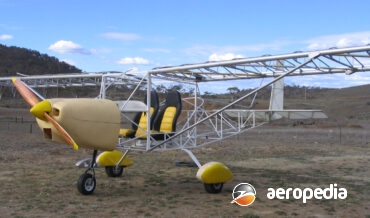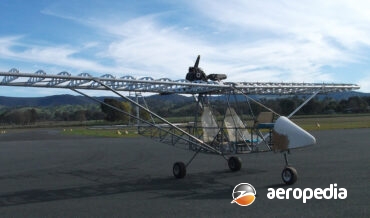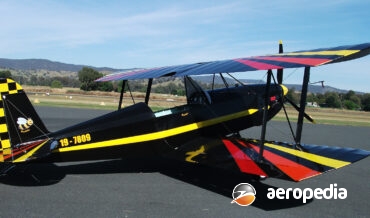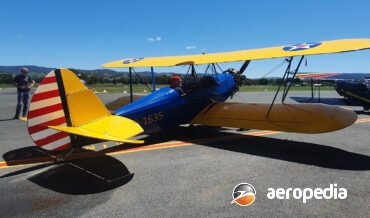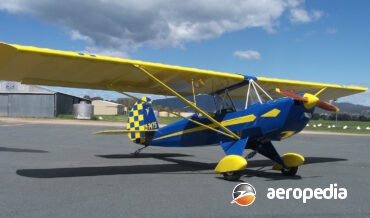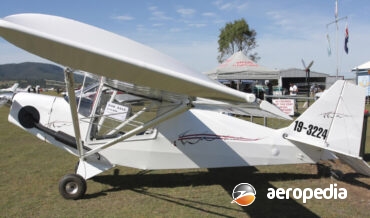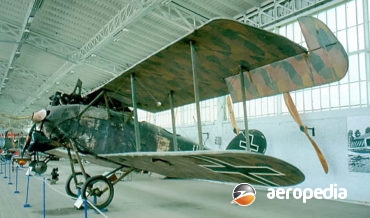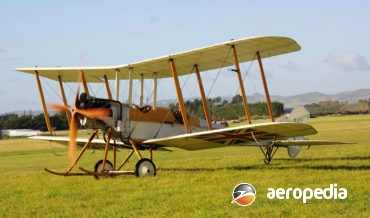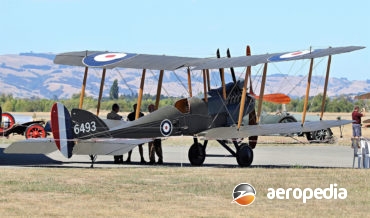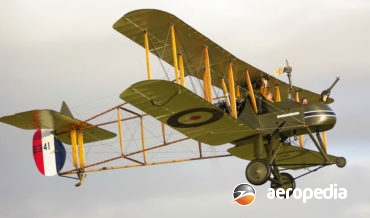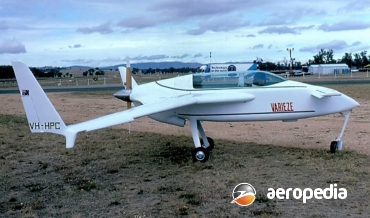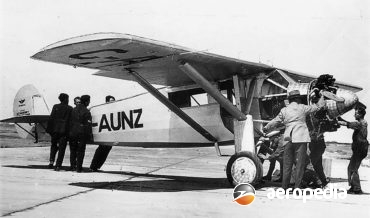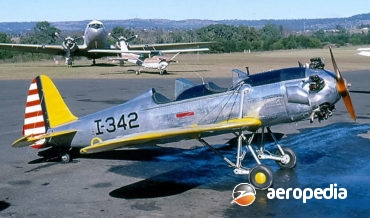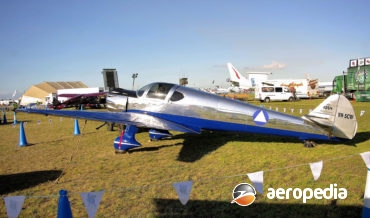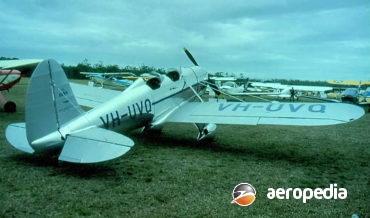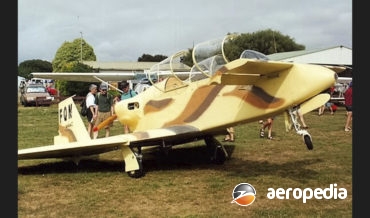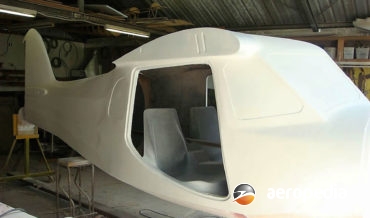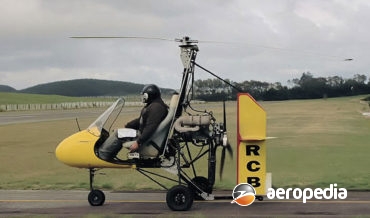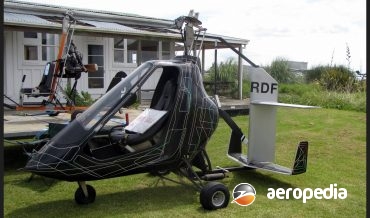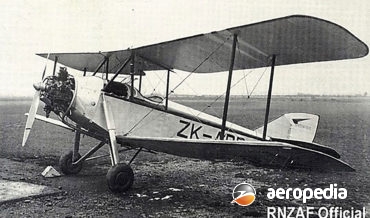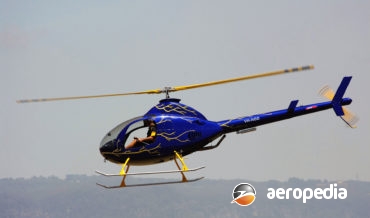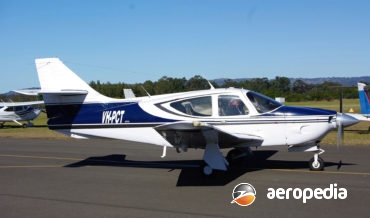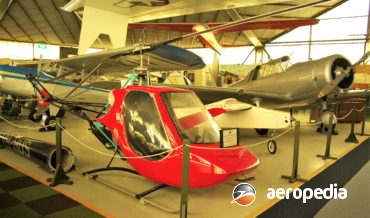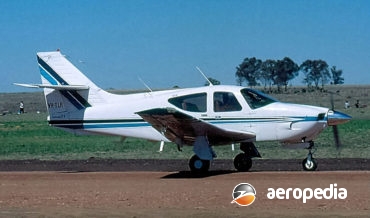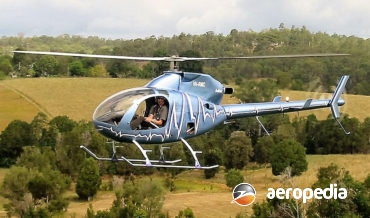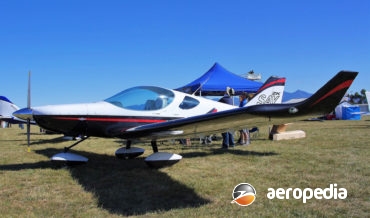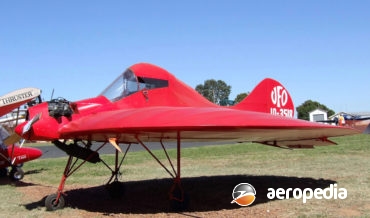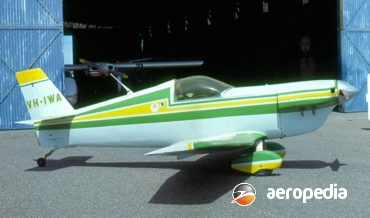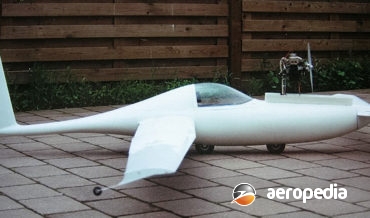All Contents
Contents
Photograph: The first Tempest during construction at Tumut, NSW (M Roodt) History: The Tempest is a two-seat, side-by-side, light sport aircraft, designed by Michael Roodt for touring. It is fitted with a 80 kw (108 hp) Lycoming four-cylinder engine.
David C. Eyre
- November 22, 2021
Photograph: The first Australian Spurwing during construction (M Roodt) History: The Spurwing is a two-seat in tandem light sport aircraft fitted with a Rotax 618 LC engine providing 56 kw (75 hp). The aircraft was initially designed and built by Mr Roodt in South Africa where he first aircraft was
David C. Eyre
- November 22, 2021
Photograph: The Bumblebee at Tumut, NSW (M Roodt) History: The Bumblebee is a biplane designed and built by Miichael Roodt and was initially fitted with a 39 kw (52 hp) Rotax 503 engine but this was replaced in 2021 with a 60 kw (80 hp) Jabiru 2200 four-cylinder engine. The
David C. Eyre
- November 22, 2021
Photograph: The Barnstormer at Tumut, NSW (M Roodt) History: The Barnstormer is a two-seat in tandem scale Boeing Stearman initially fitted with a seven-cylinder Rotec R-2800 radial engine providing 83 kw (110 hp) with a cruising speed of 121 km/h 975 mph) and stalling speed of 68 km/h (42 mph).
David C. Eyre
- November 22, 2021
This was an attempt to build a man-powered aircraft by a Mr Ranford in Western Australia. Little is known about it but at one stage it was placed on display at the WA Aviation Heritage Museum at Bull Creek, WA but after sometime was removed and placed into storage.
David C. Eyre
- May 25, 2020
The Sunbird was designed and built by Michael Roodt and is a two-seats in tandem light parasol-wing aircraft with an open cockpit.
David C. Eyre
- May 25, 2020
Azor Robinson and Alexander Porter, both of Albury, in 1912 built a single-engine aircraft along the lines of a Bleriot and it was flown on a number of occasions at Bongowanna Park, the first flight being recorded as 27 July 1913.
David C. Eyre
- May 25, 2020
The Corella is a single-seat light sporting aircraft with a high-wing and a tailwheel undercarriage. Registered with RAA on 1 September 1999 as 19-3224 (c/n 1) it is described as a Glenda Rickard Corella.
David C. Eyre
- May 25, 2020
Mr G S Richardson in 1900 moved to the town of Penguin in Tasmania in 1900 and built and operated a small cordial drink facility.
David C. Eyre
- May 25, 2020
Replicraft, an American company, has produced plans to build scale replicas of the SPAD VII, SPAD XII, Roland D.VI, Hanriot HD.1, Sopwith Pup, Thomas Morse, Fokker D.VII, Sopwith Camel, Sopwith Triplane, RAF SE.5a and the Sopwith Snipe.
David C. Eyre
- May 25, 2020
The SE-5 (Scout Experimental 5) and SE-5a share, with the Sopwith Camel, the distinction of being the best single-seat British fighter aircraft of World War I.
David C. Eyre
- May 19, 2019
The Max Holste Company was founded in 1946 and built the Broussard and Super Broussard. In 1960 it entered into an agreement with Cessna of Wichita, Kansas, to produce aircraft for the European market and the new company became known as Reims Aviation.
David C. Eyre
- May 19, 2019
The Republic P-43 Lancer was a development of the Seversky P-35, and in turn was developed to become the P-47 Thunderbolt. In 1938 the Seversky Aircraft Corp worked on the development of the P-35, the AP-2 and the AP-4, each differing only in the positioning of the turbo-supercharger.
David C. Eyre
- May 19, 2019
Designed by Alexander Kartveli, Republic Aviation’s chief engineer, the P-47 was one of the outstanding designs of World War II, being the mount of some of Americas top scoring aces, undertaking some 546,000 combat sorties between March 1943 and August 1945, during which 1,934,000 operational hours were accumulated.
David C. Eyre
- May 19, 2019
The Rumpler C.VIII was developed by Dr Edmund Rumpler from a series of fighters he designed for the German services, stemming from the C.I, C.III, C.IV, early models being known as the Eindecker and the Taube, these being two-seat monoplanes used on reconnaissance flights at the beginning of the War.
David C. Eyre
- May 19, 2019
In 1912 the Royal Aircraft Factory (formerly the Army Aircraft Factory) produced the BE.2 with a 52 kw (70-hp) Renault engine.
David C. Eyre
- May 19, 2019
The BE.12 was a single-seat fighter developed in 1915. The prototype was a re-built BE.2c (serial 1697), being a two-bay equal-span biplane with a Royal Aircraft Factory 4a engine.
David C. Eyre
- May 19, 2019
Built by the Royal Aircraft Factory at Farnborough, the FE.2 (Fighter Experimental 2) first appeared in 1911, entering production in August 1913 as a fighting scout aircraft.
David C. Eyre
- May 19, 2019
In 1913 the Royal Aircraft Factory at Farnborough commenced the design of a series of aeroplanes suitable for reconnaissance, the aim being to produce a stable machine so the crew could concentrate on the task at hand.
David C. Eyre
- May 19, 2019
The VariEze was designed by Bert Rutan in late 1974. The first aircraft was built over a ten-week period in the spring months of 1975 in the USA, and was first flown on 21 May 1975.
David C. Eyre
- May 8, 2019
The Ryan Brougham series was the first real attempt by the Ryan Aircraft Corp to produce a light commercial transport, and the type became famous when a variant, known as the Ryan NYB (NX211) was used by Charles Lindberg to fly the Atlantic in May 1927 in 33 ½ hours.
David C. Eyre
- May 8, 2019
The Navion was designed by North American Aviation as the NA-143, later the NA-145, and major production in some numbers was by Ryan Aeronautics to the extent that some 1,238 examples were constructed in the years 1948 to 1950, the latter acquiring the rights to the design in 1947.
David C. Eyre
- May 8, 2019
Although looking somewhat similar to the Ryan STA/STM series of two-seat military trainers, the Ryan PT-22 was in fact an entirely different aeroplane built by the same manufacturer.
David C. Eyre
- May 8, 2019
In August 1937 the Ryan Aeronautical Company rolled out a new design, the SC series being a Sport Coupe of all metal construction.
David C. Eyre
- May 8, 2019
The Ryan Aeronautical Company was a successor to the Ryan Company which produced the Ryan Brougham, the type used by Charles Lindbergh in his Atlantic crossing, and a few examples of which were registered in Australia in the 1930s.
David C. Eyre
- May 8, 2019
In 1934 Tubal Claude Ryan created the Ryan Aeronautical Corporation in a location similar to where the old Ryan Aircraft Company had built its designs.
David C. Eyre
- May 8, 2019
Design of the VariViggen was commenced by Elbert ‘Bert’ Rutan in 1968 and the prototype, known as the Model 27, flew for the first time in May 1972.
David C. Eyre
- May 8, 2019
Rotec is an Australian company which is well known for its production of two radial engines for light aircraft, the seven-cylinder R-2800 and the nine-cylinder R-3600, and the production of throttle body fuel injection units and liquid cooled heads for Jabiru engines etc.
David C. Eyre
- May 8, 2019
Rotor Flight Dynamics Inc of Wimauma, Florida has for some years been producing single and two-seat gyrocopters using the patented Dragon Wing Rotor, the Dominator being designed by Ernest Boyette.
David C. Eyre
- May 8, 2019
The Falcon is a light gyrocopter produced in kit form in the United States and has been produced in two variants, the Falcon single-seater and the Falcon II two seater.
David C. Eyre
- May 8, 2019
The Redwing was designed by John Kenworthy as a light touring biplane, being built by Robinson Aircraft Co Ltd of Stafford Road, Wallington, Surrey, which later in 1931 became Redwing Aircraft Co Ltd.
David C. Eyre
- May 8, 2019
B J Schramm has been involved in the designing and marketing of both ready-to-fly and prefabricated components for light helicopters since the 1960s.
David C. Eyre
- May 8, 2019
The first of a new series of single-engine monoplanes, the prototype Commander 112 was flown for the first time on 4 December 1970 powered by a 134-kw (180-hp) Lycoming O-360 engine.
David C. Eyre
- May 8, 2019
The Schramm Aircraft Company was formed in 1958 by B J Schramm to market both ready-to-fly and pre-fabricated components for a single-seat light sporting helicopters.
David C. Eyre
- May 8, 2019
Over the years the early variants of the Model 112 were perceived as under-powered and had limited load capability and the manufacturer addressed these problems in November 1975 with the Model 114, of which more than 1,100 were delivered.
David C. Eyre
- May 8, 2019
The T-62 is a development by K.I.S.S.Aviation of the kit-built Executive 162 helicopter, which is produced by Rotorway International at Chandler in Arizona, to take a turbine engine, a number of examples being completed in the United States.
David C. Eyre
- May 8, 2019
The prototype of the NG4 Stratus [OK-NUR 20] powered by a Rotax 912ULS engine was flown for the first time on 23 March 2008, this being a new type from the Czech Republic designed to meet American and European light-sports aircraft regulations.
David C. Eyre
- May 8, 2019
The UFO series of light aircraft was designed by David Rowe, an engineer, at Scone, NSW. The aircraft commenced with a sketch he made of a circular shaped aircraft.
David C. Eyre
- May 8, 2019
The design for a single-seat, sporting monoplane of all-wood construction, which became known as the Rollason Beta, resulted from a competition conducted by Rollason Aircraft and Engines in the United Kingdom in 1964.
David C. Eyre
- May 8, 2019
The Model 77 Solitaire was designed by Burt Rutan as an entry to the Sailplane Homebuilders Association Design Competition in the United States in 1982 and his design, a single-seat canard aircraft with a mid-wing, won the contest, its unusual layout attracting a lot of interest. For a few years
David C. Eyre
- May 8, 2019
Recent Comments
Archives
Categories
- No categories
Categories
- No categories
Latest Posts
Newsletter

